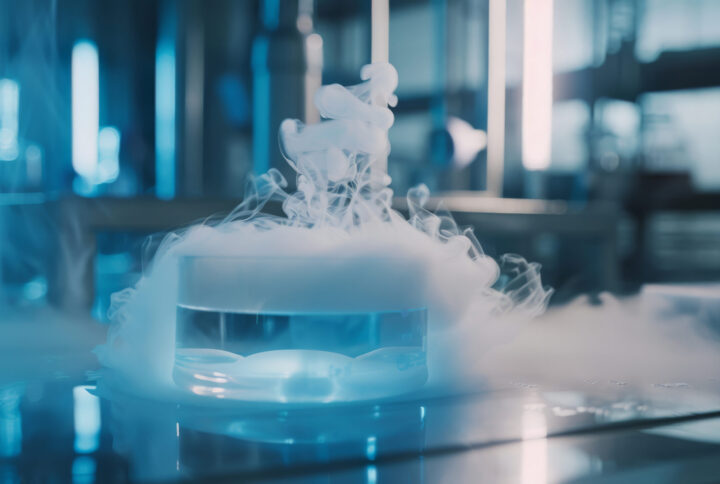Purpose of Liquid Nitrogen:
Liquid nitrogen is a colourless, odourless, and inert liquid that closely resembles water in appearance. Its extreme coldness and ability to rapidly cool or freeze materials make it a highly versatile substance. In laboratories, liquid nitrogen is widely used as a coolant, providing efficient and rapid cooling for experiments and equipment. However, despite being chemically inert, liquid nitrogen poses significant hazards if not handled properly.
Beyond the laboratory, liquid nitrogen has found applications in various industries, including hospitality, where it is used to instantly freeze food and create dramatic clouds of vapour for cocktails and other presentations. Its growing popularity across sectors underscores the need for awareness about its risks.
This blog highlights the potential dangers of liquid nitrogen, emphasising the importance of safe handling practices to mitigate risks in any environment where it is used.
Main Hazards of Liquid Nitrogen:
Cryogenic Burns – These are burns caused by the skin tissue becoming exposed to nitrogen after it has dropped below its boiling point of –320.4 degrees Fahrenheit. These burns can lead to frostbite and significant injury, especially to the eyes. If you become exposed to liquid nitrogen, you must seek medical assistance immediately and slowly rewarm the affected area in a water bath between 104-108 Fahrenheit.
Asphyxiation – Liquid Nitrogen rapidly evaporates into nitrogen gas, displacing oxygen and potentially causing suffocation in poorly ventilated spaces. Liquid nitrogen expands approximately 695 times its volume when it vaporises and is both odourless and colourless, making it difficult to detect. If enough liquid nitrogen vaporises in a confined space, it can displace oxygen, potentially reducing oxygen levels below 19.5%. Such oxygen deficiency poses a serious risk of unconsciousness or asphyxiation.
Pressure Buildup and Explosions – In sealed containers, the rapid evaporation of liquid nitrogen can create dangerous pressure levels, potentially leading to explosions.
How to safely handle liquid nitrogen?
The safety precautions as outlined must be followed to avoid potential injury or damage which could result from the hazards mentioned above. Do not attempt to handle liquid nitrogen until you read and fully understand the potential hazards, their consequences, and the related safety precautions.
1 – Wear PPE
It’s important to wear protective clothing when working with liquid nitrogen. Cryogenic gloves protect your hands from accidental spills and contact burns. Ensure your gloves are loose fitting so you can quickly remove them in case of liquid nitrogen spillages. Your lab should also have access to face shields and safety goggles to prevent eye injuries from splashes or vapour exposure. It’s important to also consider what you wear just in case of accidental spillages, such as closed-toe shoes and long trousers.
2 – Storage and Handling
Liquid nitrogen should always be stored in Dewar flasks or other cryogenic containers specifically designed to handle extreme cold and to prevent pressure buildup. These containers must never be sealed tightly; they should have pressure release mechanisms to allow safe venting of nitrogen gas. When transporting liquid nitrogen, use carts or trolleys to minimise the risk of spills or container damage. Always handle liquid nitrogen carefully to avoid overfilling, splashing, or exposing uninsulated surfaces, as these can cause serious injuries or equipment damage.
3 – Training and Awareness
Ensure all lab personnel are trained on liquid nitrogen safety, including risks, handling procedures, and emergency response protocols. Regularly review these practices to maintain a culture of safety throughout the laboratory.
Throughout this blog, we have explored the different hazards you can experience when using liquid nitrogen and ways that you can safely handle it without causing injury. All labware discussed in this blog such as PPE, can be purchased on Techmate to maintain the safety of your laboratory.
Contact us here for more information.

